Philadelphia Fringe Festival 2022 Diary (Updated 9/25/22)
The Philadelphia Fringe Festival brings its annual selection of immersive and site-specific works
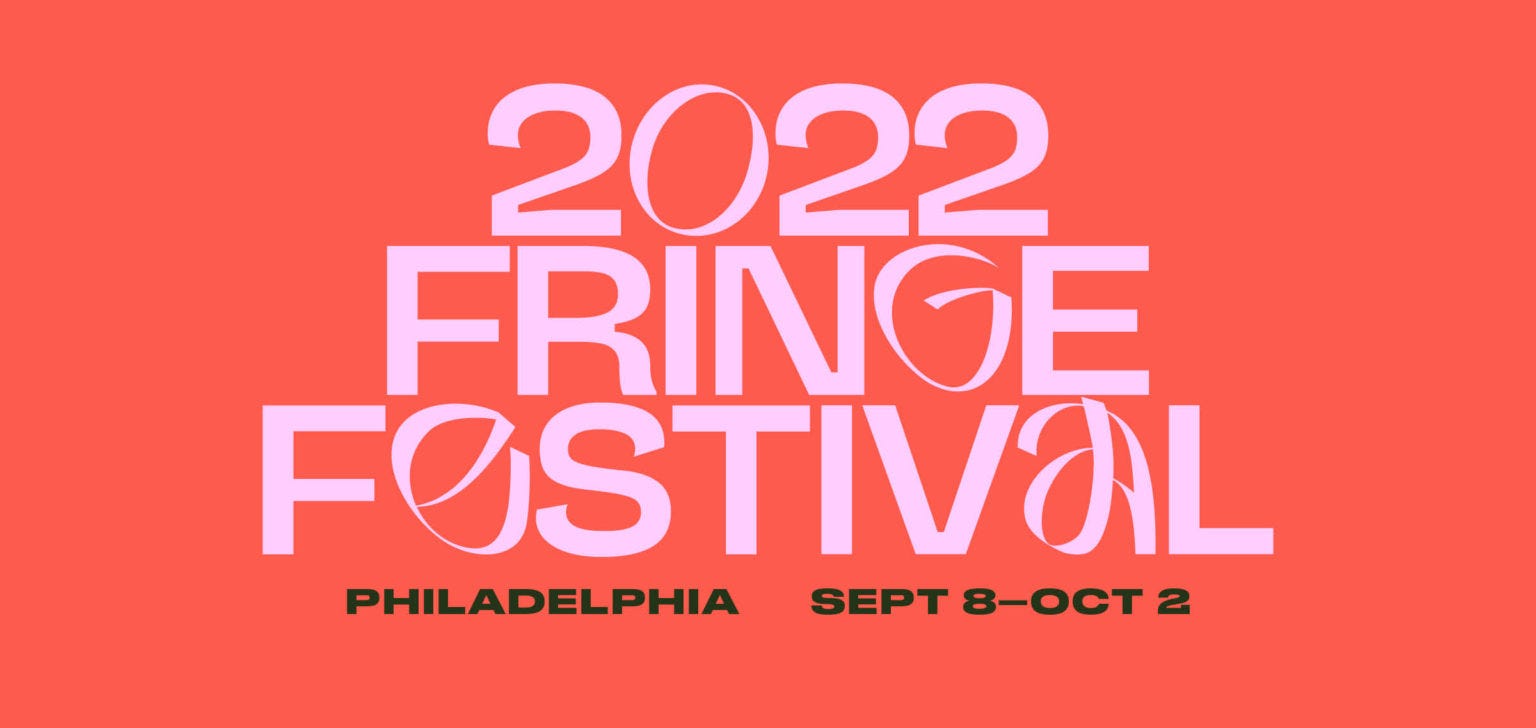

Philadelphia’s theatre scene has been the home of talents that have grown into staples of the immersive scene up and down the East Coast and across the United States. From companies like Alterra Productions to solo artists such as Jessica Creane and Yannick Trapman-O’Brien, all of whom have earned rave reviews in our pages over the years.
This year the Philadelphia Fringe will play host to these artists and a lot more, with over a half-dozen immersive productions and experiments ranging from one-on-ones to affairs that take over whole buildings. Below are selected reviews of some of the most prominent productions.
Baal & Dix — Die-Cast
$20, Through September 12
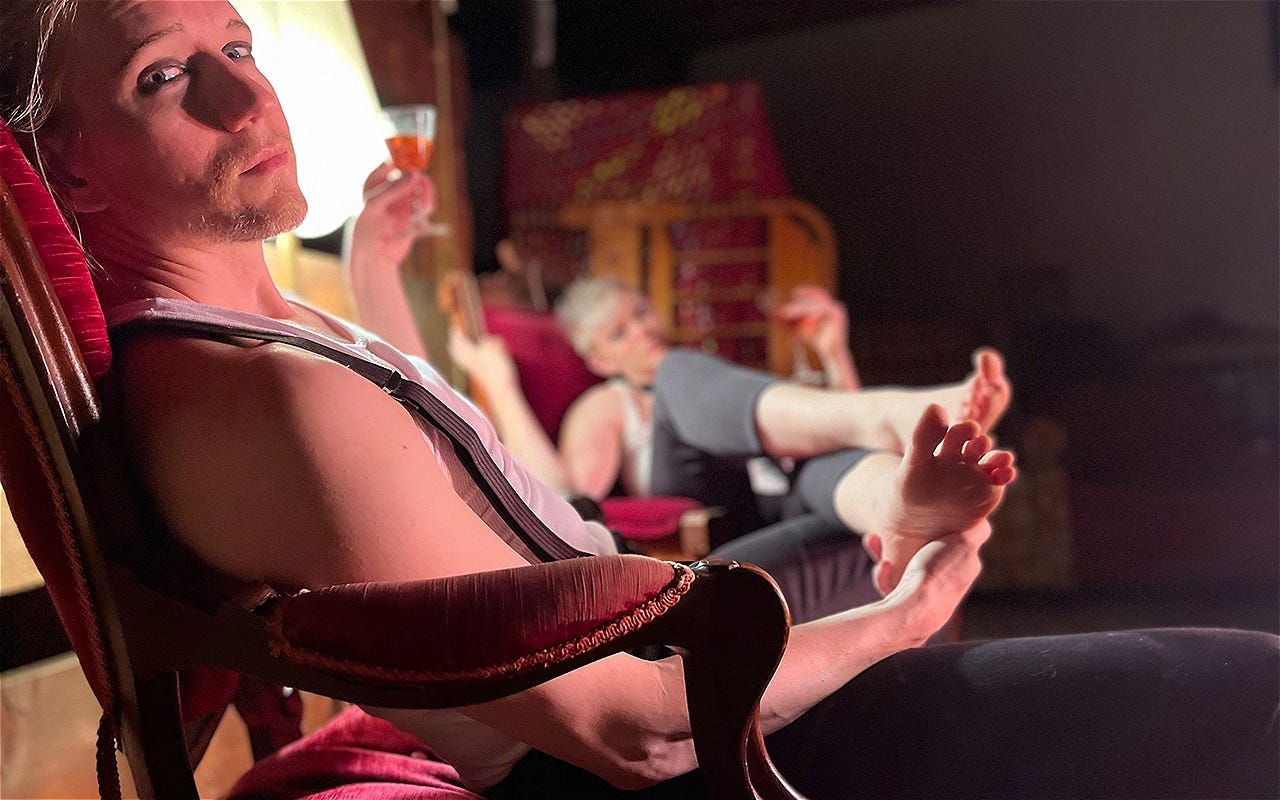
Beyond his politics and prose, Bertholdt Brecht survives in dramaturgical discussion for the simple reason that it’s fun to talk about Brecht. Brecht means painted faces and cabaret songs, a collapsing fourth-wall and robust debates on how any of this, if anything, reflects reality.
Die-Cast presents Baal & Dix with the brilliant idea to discuss Brecht himself in his own structural terms. We’ve already gone full Verfremdungseffekt as we walk through the door, alienated from any “reality” of the show. Instead, we’re giggling about the ribald title (referencing Brecht’s first play, Baal, and “degenerate” painter Otto Dix) and grabbing beers in the delightful, almost parodically masculine Brauhaus Schmitz.
What begins as an academic lecture on Brecht quickly becomes a three-ring circus, where a mutable, roving ensemble cast plays Brecht, Dix, a cadre of academics debating them, and a wide array of their subjects and characters. By the end, characters are debating their own narrative function and breaking into classic beer hall tunes before dragging audiences to the men’s room for shots of whiskey and hymns to masculinity.
The whole effect is like a pub crawl with Ph.D. drama students. We the audience weave in and out between fantasy and reality to question the academic and public affinity for unquestionably important but ultimately morally fallible artists. The reasons for affinity are also on full display, with both Brecht and Dix’s works presenting a seductive homoeroticism, humor, and decisive calls to action (despite Dix’s claims of political neutrality). The structure of Brecht is explicitly called out as brilliant, a final monologue pleading for the audience to use the effective techniques he developed as a weapon against the kind of toxicity he embodied.
I focus on Brecht and not Dix because the play saves the majority of its venom for Brecht. The misogyny of Dix’s paintings of grosteque women and murdered sex workers is examined, but ultimately is more excused than the plagiarism, abusive behavior, and hypocrisy of Brecht. The plagiarism is particularly explored; “I thought I was having a love affair with Brecht,” laments an academic reading his work, “but no one told me it was a goddamn orgy!” There’s an artistic defense for Dix’s work, but none for Brecht’s behavior.
I only question one element, a Bowie-inspired androgynous digital ghost that shows up through multimedia projections. While this character serves as a useful Greek chorus, they alternate between too ambiguous and too didactic by scene.
Nevertheless, Baal & Dix is one of my favorite Fringe shows to date. The laughter and drinks temper a profound exploration of the relationships between audience and artist, artist and muse, and an artist with their own work. Baal & Dix raises a hearty stein of beer to our problematic favorites, and it’s a pleasurable, eye-opening experience to drink deeply from that glass.
Death is a Cabaret, Ol’ Chum — REV Theatre Company
$35, Through September 17

Cabaret lives and dies on vibes, and Death is a Cabaret, Ol’ Chum has vibes a plenty. Presenting a fairly simple three-person cabaret, the whole thing is elevated by its immersive staging. Nestled on picnic blankets amidst the dramatic angels, mausoleums, and obelisks of Laurel Hill Cemetery, cocktails in hand, the whole experience of Death is a Cabaret is a cheeky, delightful danse macabre.
The singers are professional and impressive, if not particularly notable. Their performances are somewhat hampered by the obvious restrictions of the space. Using handheld mics and handheld light strips to provide their own lighting for a majority of numbers, the performers occasionally seemed encumbered. Still, they gamely played with those limits. A few set piece numbers used non-handheld lighting and were better performed for it. Even if lighting would always be a challenge in a graveyard, costume changes were limited enough that a headset or lavalier mic would be a simple, feasible improvement to free up the performers.
The variety of songs and creativity in staging them elevates the production above its simple ambitions. Macabre classics like Porter’s “Ms. Otis Regrets” are mixed with deep cuts such as the showstopper of the show, “Send Me to the ‘Lectric Chair”. More modern selections are also featured, such as “Dance While the Sky Crashes Down”, and personal favorite “Intermission” by the Scissor Sisters. Of course, a few of these more unexpected selections don’t quite land. “Video Killed the Radio Star” was a well-performed, pleasant surprise, but didn’t quite match the tone of the evening.
If a lot of these complaints sound like nitpicks, it’s because they are. Generally it’s great fun, and a wonderful gateway to immersive for less experienced audiences. An evening of engaging with the concept of death sounds bleak, but in song and dance, the cabaret works in making the unthinkable engaging.
LUSTER — Brian Sanders’ JUNK
$30–65, Through September 17
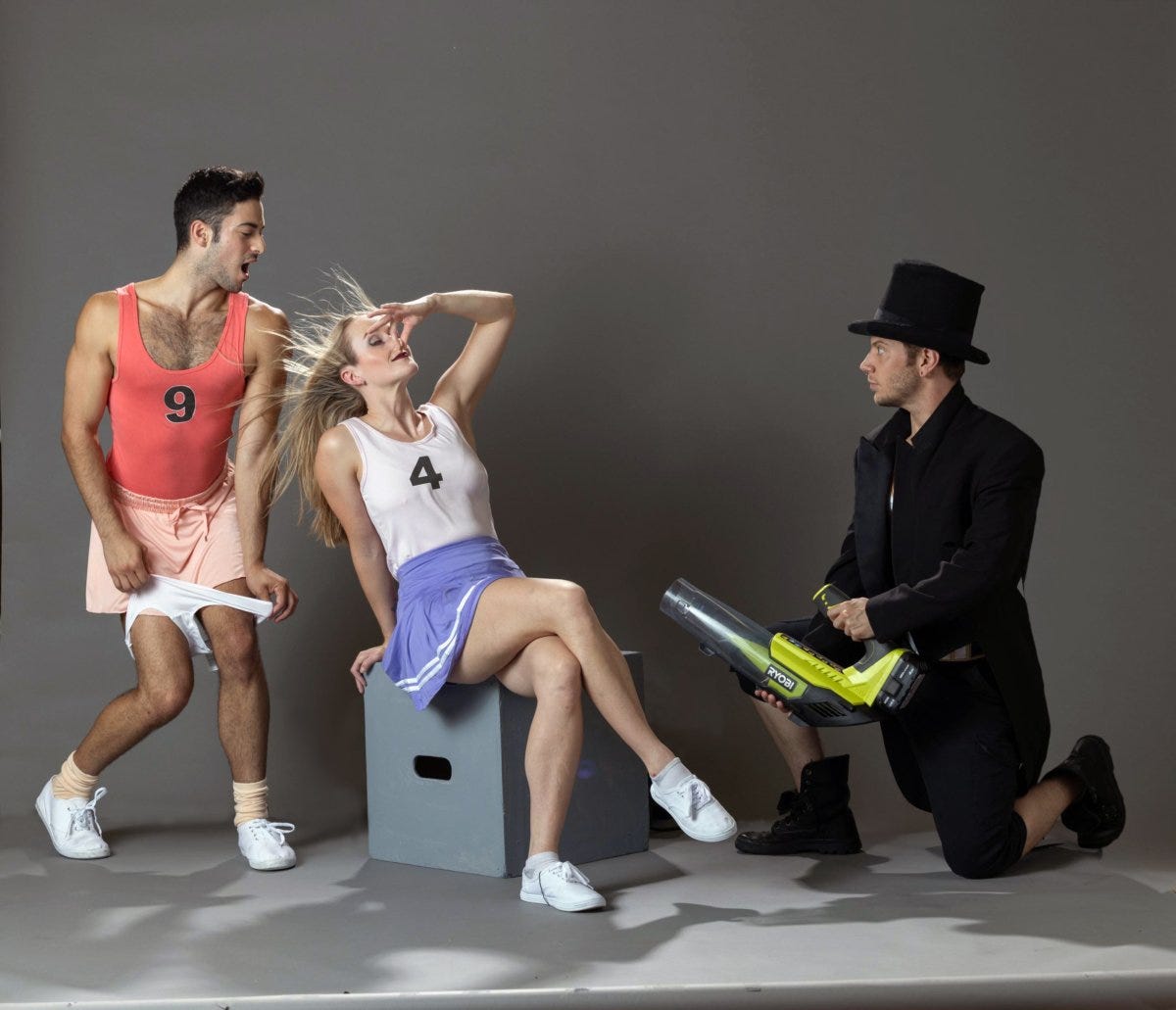
John Waters short circuited audiences’ brains with Pink Flamingos. How do we engage with a deliberate attempt to present bad taste? What does this say about the creators? What does this say about us, sitting here watching this? Brian Sanders’ JUNK asks a lot of the same questions in LUSTER with beautiful performances and aesthetic panache. However, the challenges of live theatre and concessions to audience taste make LUSTER’s answers ring a bit hollow.
The dance itself is brilliant. As usual, Sanders is one of the most exciting choreographers currently working in immersive dance. The use of props, rigging, and costuming is top notch. For dance fans who haven’t seen a Brian Sanders production, LUSTER is a must see, combining the marvel of human movement with a saucy eroticism.
For those looking for a theatrical experience though, with a coherent message, LUSTER falls a bit short. There’s a sense that Sanders has written himself into a corner with LUSTER. The show follows the production of a dance based reality show, where increasingly cruel and dangerous challenges make us question our complicity in voyeurism. But when he needs to present a live show that appeals to a paying audience, it never gets all that cruel. Everything reads as standard practice for reality TV, from the invasions of privacy during moments of pain to the steamrollering of creative vision. Even at its most cruel, a dance simulating a waterboarding choreographed by a competing team, the production shuts down at any danger, and the competitors’ anger at the production team reads as misplaced.
Advertised elements such as audience voting and winning competitors contending with cruel endgame twists never materialized. Overall, the production feels uninterested in its immersive elements, sidelining them and forgetting them in service of highlighting the dance. That isn’t to say LUSTER isn’t a pleasure. More so that I’d hope to see more focus on immersive elements going forward, or revision of marketing materials to reflect the production’s focus.
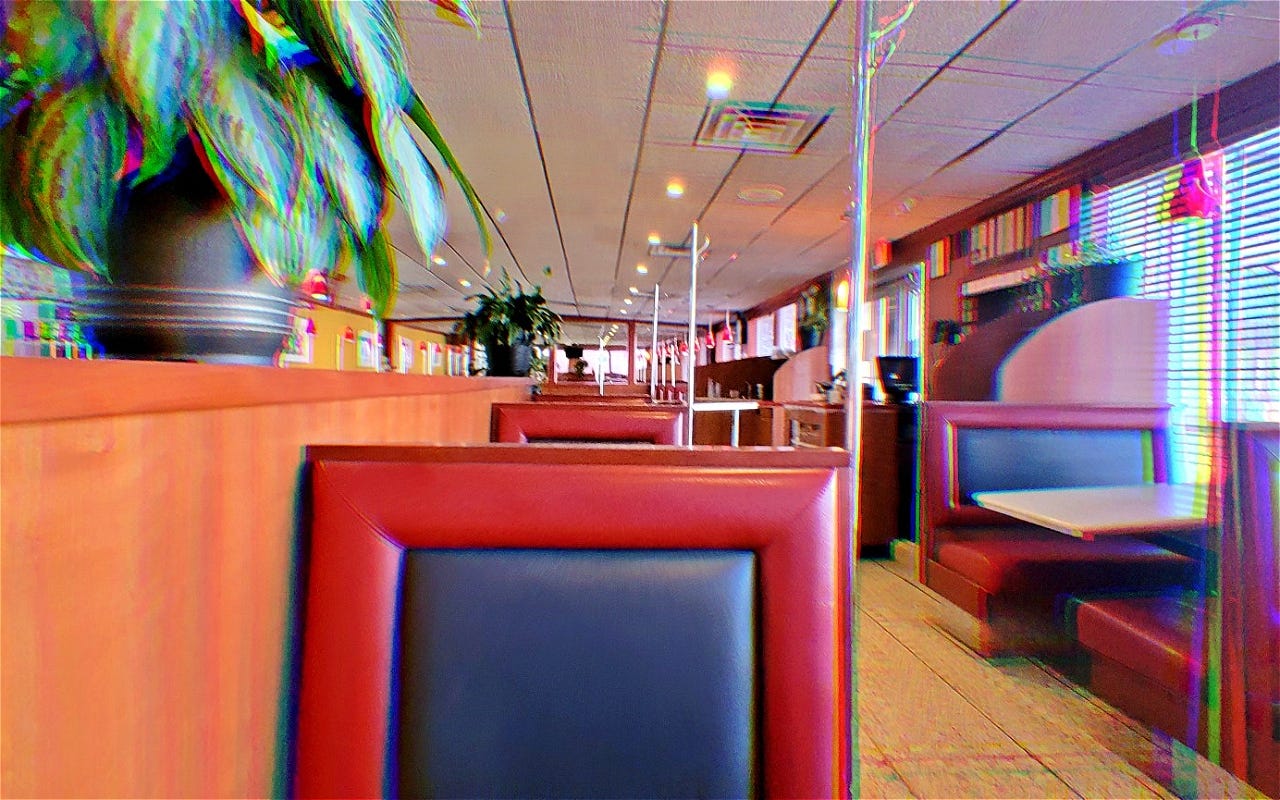
Yes, We’re Ready, We’ll Split an Order of Fries for The Table — Does That Work for You? — Sure, One Check Is Fine — Mike Durkin & Nick Schwasman
PWYC, Through September 17
Without ever seeing it, the premise of 2000’s Philip Seymour Hoffman comedy State and Main has stuck in my head. How are they going to film their movie, “The Old Mill”, on location in a town with no old mill? Yes, We’re Ready (no, I will not be typing it out) felt like the sweetly naive, incredibly cursed immersive theatre version of this conundrum. How are we going to perform our show about the experience of being in a diner, meant to be experienced in a diner, when the diner we’ve partnered with is permanently closed?
If you guessed they’d try to make arrangements with another diner, we’d be in the same boat. If you guessed they’d set up a tiny children’s tea party table covered in salt shakers and a toy jukebox in the diner parking lot, and have the audience sit on the ground, I don’t believe you, you’re lying. That is, however, what we did.
The content of the show was generally sweet, a guided recollection on the rise and fall of the diner as a cultural icon, peppered with diner trivia and culture, but at the end of the day, it seemed hard to care for much of the audience. It seemed hard to keep up for the flustered performers too, trying to manage a clearly unforeseen circumstance while they were in deep over their heads.
Here we were, sitting on the hot pavement outside an abandoned diner, breathing in fumes as the commuters of Philadelphia used the parking lot as a U-turn shortcut to avoid four lights. Yes, we split an order of fries, but they were cold and soggy by the time we ate them, and there were only enough for the audience to have about 5 fries a piece.
In the dreaded words of my mother, I’m not mad, I’m just disappointed. I think there’s a great concept here, and under less absurdly dooming circumstances, the show may have worked. Unfortunately, grease fires, run away owners, and a changing restaurant landscape ensured these were our circumstances, and this was our show.
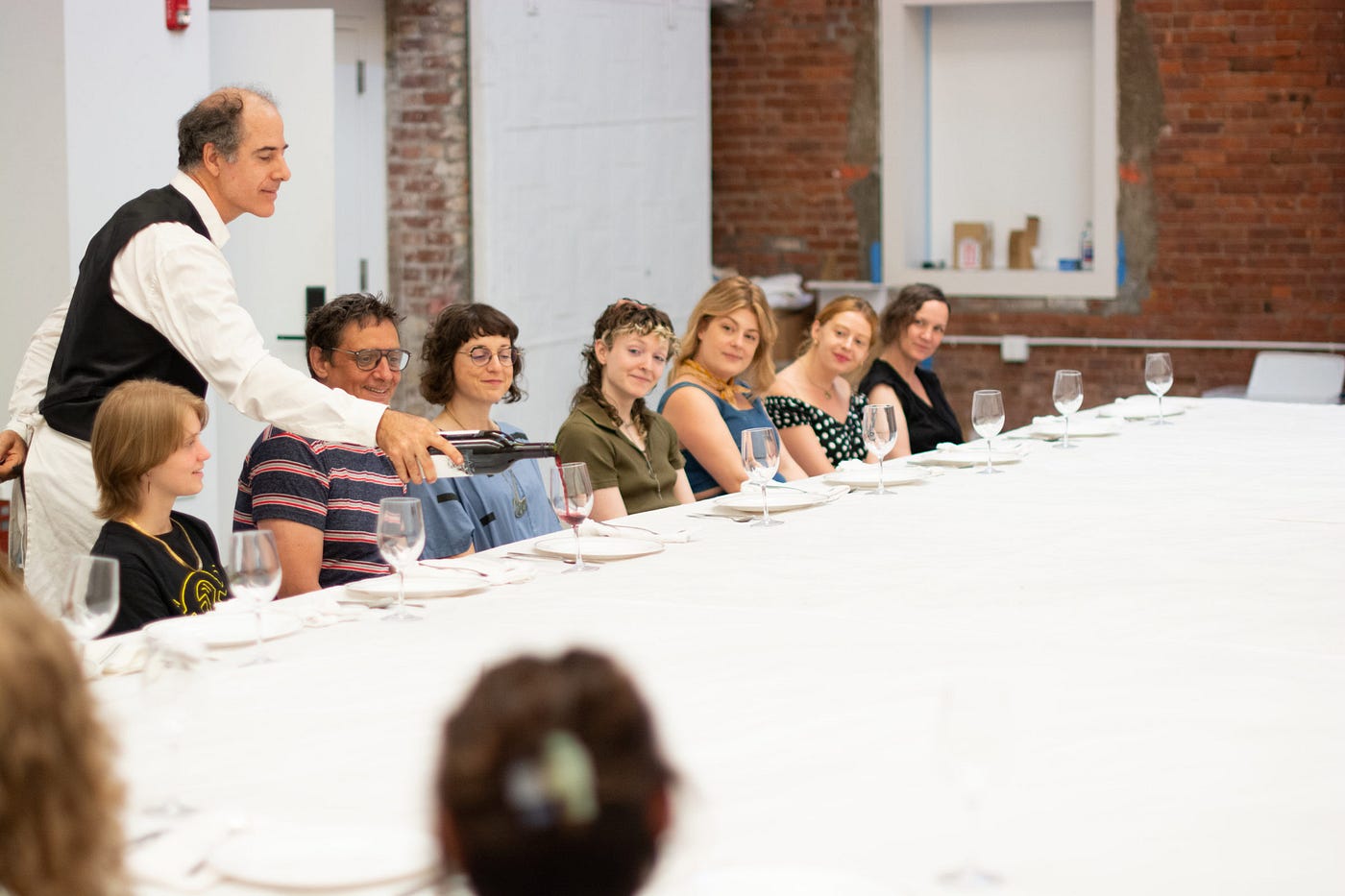
FOOD — Geoff Sobelle
$45, $15 Students and Under 25, Through September 18
“It’s very rude,” shouted the older woman sitting next to me at the huge square banquet table, “to eat when you haven’t served your guests!” This was about the third time she had shouted this, convinced it was a hilarious bon mot. Geoff Sobelle, sole performer in the piece, finally shot her a withering look, before continuing the spectacular illusion of gorging himself on a repulsive feast laid before him. The audience chuckled briefly at the one pointed break in character before returning to watch, transfixed.
Get Blake Weil’s stories in your inbox
Join Medium for free to get updates from this writer.
SubscribeSubscribe
I open with this unpleasant exchange (by far the most printable of her often tasteless interjections) to highlight how much I loved FOOD. Geoff Sobelle has created a work so brilliant, it can survive the ordeal that watching it became during my rainy day matinee. Truly, if this woman could not ruin the show, it is an unkillable masterpiece.
Encompassing a full menu of emotions surrounding food, the show talks about everything from the pride and comfort of a meal well cooked to the earth-pillaging overconsumption that defines our modern food system. Like how last year’s Fringe gave us the unexpected revelation of theatrical juggling, Geoff Sobelle gives expertly crafted, hereto unseen tragicomic, thought provoking illusions.
Seating a majority of the audience around an enormous white clothed table the size of the theatre beneath a chandelier of plastic tableware, the show ebbs and flows between tones and structures. While the show opens with a guided meditation, it quickly expands to shared recollections over glasses of wine, a comedy magic showcase that feels somewhere between David Blaine and Jacques Tati, and a third act reveal that feels both inevitable and completely shocking. While each act is spectacular in its own regard and completely isolated in tone and content, together they form a rich thematic tapestry that Sobelle mines for all the joy and pathos the simple act of eating evokes.
At the show’s close, I was selected to deliver a long, closing not-quite monologue through a trick I dare not reveal. My greatest challenge in this elaborate, public one-on-one wasn’t delivering the lines, but remaining focused enough to do so when my mind was begging to engage with the content. Equal parts side-splitting and thought provoking, FOOD is more than a meditation on the what, why, and how of eating. It’s a must-see journey through the space between dirt and mouth, past and present, and person to person.
The Poison Garden — Alterra Production
$40, Through September 21
There is a place, or so the legend goes, that kills you. It doesn’t matter what you do, how sympathetic you are, or how much power you possess. You touched this place, and now your fate is sealed. The Poison Garden is an entirely seductive invitation to touch that place.
In my earlier review of the show’s first production, I compared it to Steven King. It now also achieves a sort of Lynchian Twin Peaks weirdness, new scenes and staging adding a sense of genre pastiche that runs throughout the show. We vacillate between Downtown Abby and The Great Gatsby before diving head first into Invasion of the Body Snatchers in the last act. The restaging also addresses the slightly sparse feeling of the first production’s staging, incorporating food and drink, more group scenes, and more specific dance sequences.
There’s an element of Disney-style imagineering that has to be mentioned. A peculiar liminal frame story is created, in which we’re all supposedly taking organic hallucinogens dissolved into our welcome drinks that allow for remote viewing of the night five people disappeared from Glen Foerd, the historic mansion that serves as the show’s venue. The whole thing reads like something Joe Rohde would write for a pre-show if unshackled from the demands of family entertainment.
As to the plot, it’s all classic haunted house soap opera, in which the desires of two rich heirs and their staff explode once a bit of supernatural vegetation begins to pick at their flaws using the gardener as a host. Still, queer pining and gender and religious trauma lend texture to the scenario.
At the end of the day, it’s just great fun above anything else. The Glen Foerd Estate is a gorgeous set, the small audience size allows for tremendous intimacy, and the spooky oddness is perfect for the Autumn. Overall, Alterra once again makes a confection of a show designed to provoke return visits and obsession from their dedicated fan base.
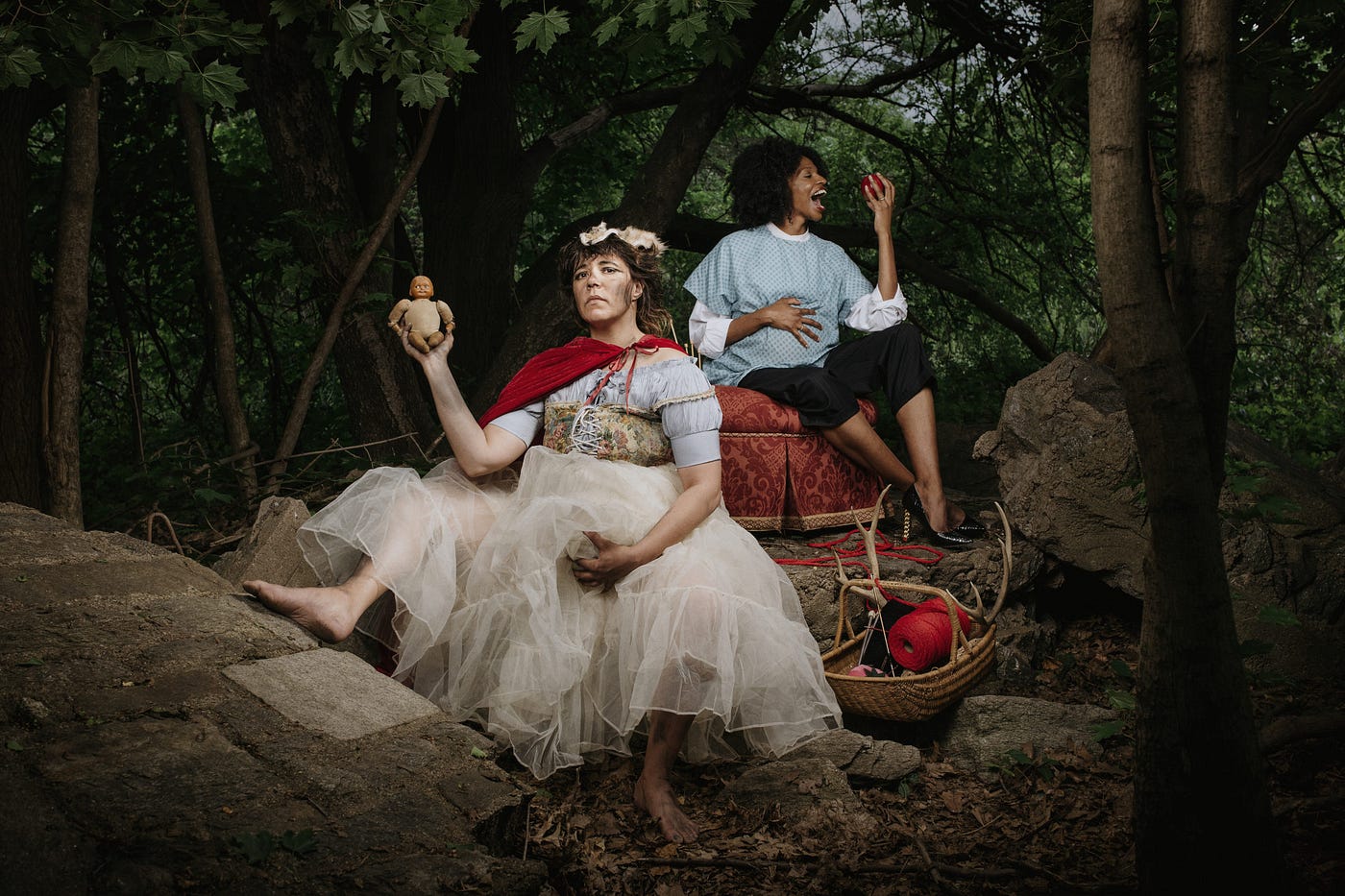
The Path of Pins or the Path of Needles — Josephine Decker + Pig Iron Theatre Company
$37, Through September 21
A banquet is laid before you. On the table are a whole roast turkey, an old boot, seven oreos, a large cake, mashed potatoes, jello jigglers, a pitcher of sangria, some nails (construction), a chef’s salad, some nails (finger), and a single serving of very nice, rare cooked steak.
This metaphor feels apt for The Path of Pins or the Path of Needles, a collaboration between the prolific Pig Iron Theatre Company and filmmaker Josephine Decker. While some material works well, the show overall is overstuffed and overladen, attempting to present a tapestry on pregnancy and motherhood through fairy tale motifs.
Some scenes are highly effective and play well with classic immersive design. In an intimate moment, I was asked to jot something mean I said to my mother during my teenage years. Familiar with the immersive trope of letting secrets go, I happily acquiesced. Later in the show, my blood turned to ice as all of our scraps were circulated for the audience to berate the lead actress with. The acting is also uniformly strong, with each performer gamely shifting between roles as scenes demand.
When the show doesn’t work, it completely falls apart though. Pins is by turns too obtuse and too desperate to be understood. A final scene (one of several potential endings) was a seemingly contextless reflection on an unknown party (was it this character’s aborted pregnancy? Only god knows, other that their name is an anagram of “Oracle ‘’ according to the one snippet of reflection we were given.) This then anticlimactically dumped us on the street ten minutes before curtain where we all shuffled awkwardly waiting for our friends still in the show.
On the other hand, a sequence on abuse and postpartum depression ended in the completely overwhelming description of a woman absentmindedly microwaving her baby. Even if based in true tragedies, the descriptions were clunky and abrupt enough to shatter immersion. “You’ll feel like you’re doing things wrong, but there’s no way to win,” a cast member told me early on. What an elegant way to tie themes of motherhood to immersion instructions, I thought. “LIKE MOTHERHOOD”, she then screamed in my face, as if pulling on my sleeve going “Do you get it? Do you get it?”
While previously, I’ve celebrated shows that attempt to tackle the totality of a theme, pregnancy and motherhood might be too large and too charged to effectively encompass in one show. If all components worked as well as some of the intimate scenes, and it simply failed to gel, I doubt anyone would mind though. But the vast ambitions of Pins so often don’t click, and put the audience off the whole endeavor.
I don’t want to eat this steak, there’s a boot on the table.
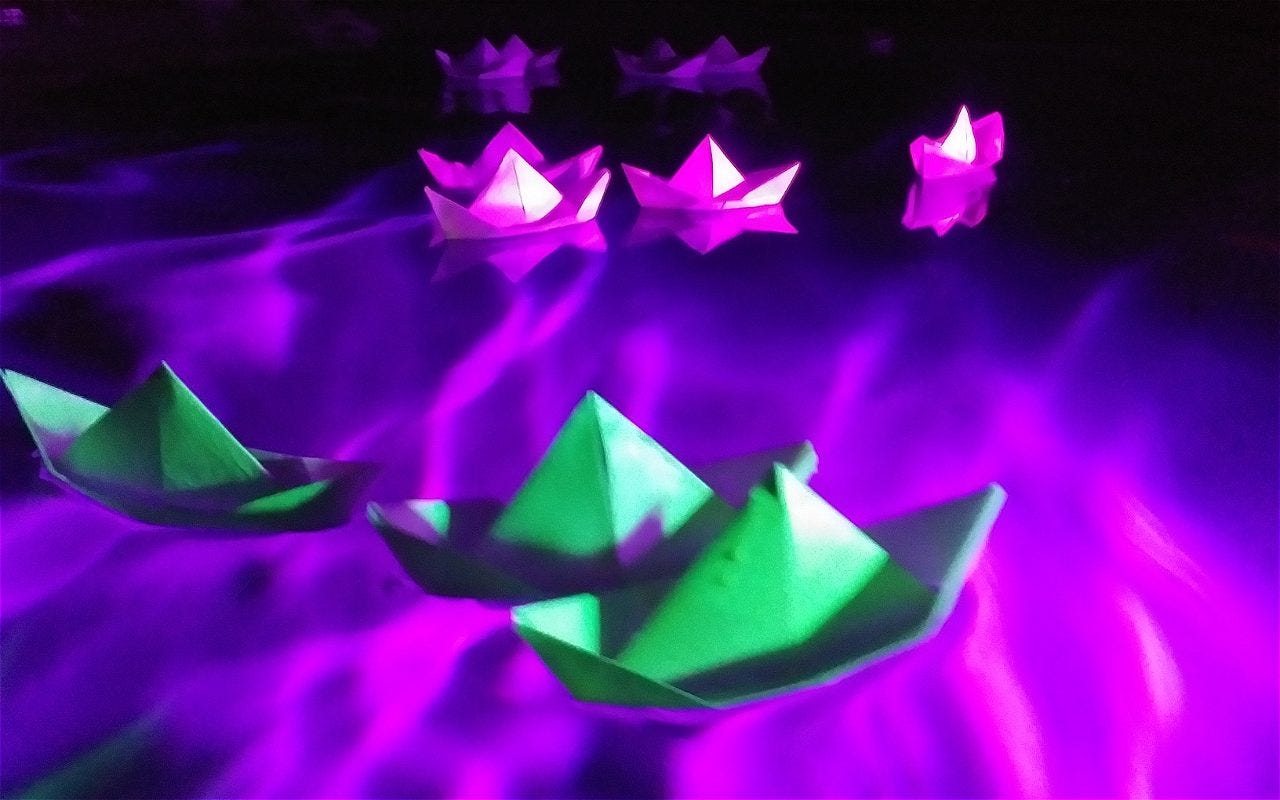
Rising From a Thousand Thrones — Forgotten Lore Theatre
$20, Through September 25
I have been at No Proscenium long enough I am no longer aware of how many immersive shows that I’ve been to. It’s not arrogance to say I’ve become an expert in learning the rules of a show, playing along, and figuring out its puzzle.
I have no idea what happened at Rising From a Thousand Thrones.
That isn’t to say I didn’t enjoy it! Quite the contrary, Rising From a Thousand Thrones is a blast that reminds me of the early, sloppy but fun days of Future Proof in NYC. Posed as a multitrack dark ride style horror biopic of Mary Shelley, the piece sits in the larger theatrical universe of literary cosmic horror Forgotten Lore has woven. To newcomers though, this is incomprehensible, stuffed with worldbuilding.
We’re running up and down stairs. A man (who I believe, but could not promise, is Samuel Taylor Coleridge) is singing dirty sea shanties. Mary’s sister is barefoot, making terrible napkin origami, singing “The Last Rose of Summer” over and over while chuckling at the ghosts. Speaking of ghosts, Percy Shelley is roaming around in spirit, incredibly horny. They’re all screaming, especially the older woman dressed as an evil queen who keeps cycling through traumatic scenes about motherhood and pregnancy. There’s a second, secret Mary Shelley. Did I mention the Rosicrucians in cultist robes? Or the Cthulhu-tentacled stage hands? Or the paper boats? Why is it always paper boats?
The whole thing is made even more surreal by the fact that even though it’s an old house, the set is just someone’s house. It’s a gorgeous old building, and well appointed, but you still can’t ignore the en-suite jacuzzi and other 80’s renovations. The set dressing is rich though, loaded with details like dozens of handwritten letters the audience has zero time to read.
It’s nonsense. But it’s bombastic nonsense! We’re drinking negronis out of medicine vials and having baby shower tea parties with an old witch and the “good cop” of the two Rosicrucians! We’re screaming into an 80’s home intercom disguised as a phonograph that Frankenstein’s monster is a hideous wretch! Whee! Let’s ride the roller coaster again, Mom!
For audiences generous of spirit, there’s even some depth to be had. Recurring motifs lent a warm melancholy to the piece, especially when following a grieving Mary Shelley trying to process the loss of her husband.
Forgotten Lore has the spark of genius and madness that makes a theatre company special. With mentorship, and experience, they have the potential to go great places. I’d love to see them embrace the nonsense: overdone or not, they’d do great work with Lewis Carroll.
Watch this space everyone. It’s alive!
Discover the latest immersive events, festivals, workshops, and more at our new site EVERYTHING IMMERSIVE, new home of NoPro’s show listings.
NoPro is a labor of love made possible by our generous Patreon backers. Join them today!
In addition to the No Proscenium website, our podcast, and our newsletters, you can find NoPro on Twitter, Facebook, YouTube, Instagram, in the Facebook community Everything Immersive, and on our Discord.